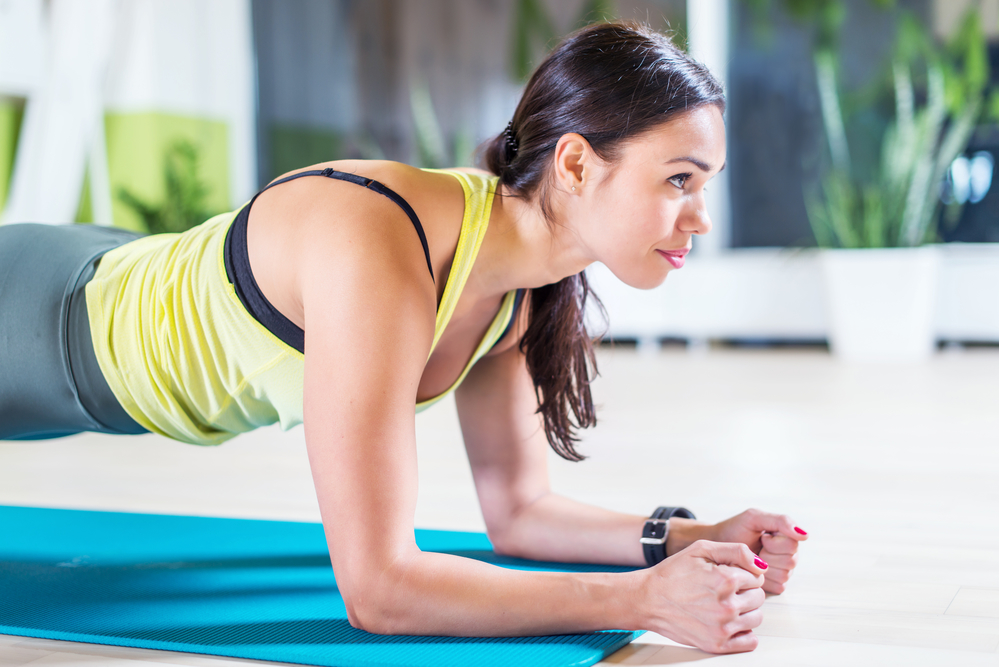Not all exercises are created equally. The plank is a veritable superpower of the fitness world and doing planks with give you much more than a satisfied feeling of accomplishment.
How do I Plank?
A plank is so seemingly simple that it might not seem like a workout at all… at least until you get into one. A basic plank can be achieved by laying on the floor facedown. Placing your elbows directly under your shoulders, enter into “pushup position” with your forearms stretched along the ground. Your weight will be supported by your elbows/forearms and your toes.
Hold your chin close to your neck as though you were grasping an orange between your chin and your chest. Hold your spine straight and brace your abdominals. Also squeeze your glutes and thighs, and ensure that you are breathing normally. Hold this position for at least 20 seconds, then rest and repeat 3 – 5 times more.
What’s so Great about Planking?
As you now can feel, planking works many major muscle groups simultaneously (including your core, thighs, and gluts). But it also has a plethora of other lovely side effects. Here’s a quick rundown of some planking benefits that you can reap if you integrate planks into your workout:
- Increased Flexibility: planking stretches many of the muscle groups it works including the posterior muscles, the lats, the rhomboids, and the traps. Your hamstrings will also get a good stretch, as will your feet and toes. If you integrate a side plank, you can also stretch out the muscles between your ribs (the intercostal muscles). To execute a side plank: from your basic plank, roll onto one elbow so that your hips are stacked (one leg on top of the other). With the arm that is not supporting your weight, reach straight up into the air above your shoulder.
- Improved Posture: since planking strengthens the muscles around your spine, this will in turn decrease lumbar pain and increase your ability to sit upright. To capitalize on this, integrate an elbow-to-knee rotation in your plank regime. From your basic plank, drive your left knee and right elbow to meet together at the center of your body. Return to your basic plank. Repeat this with the other side.
- Increased Balance: planking engaged many of the abdominal muscles that encourage good balance. If you’d like to further engage those muscles, add leg raises to your plank. Start in a side plank, then lift your top leg upward. Hold it at its apex for approximately one second, then slowly drop it back down to its starting position. Repeat this several times on each side of your body.
Remember that good planking will lead to the most muscle development in the shortest amount of time. Always ensure that you plank with good form, and emphasize this form over time the plank is held. You’ll be on your way to a solid core in no time!
